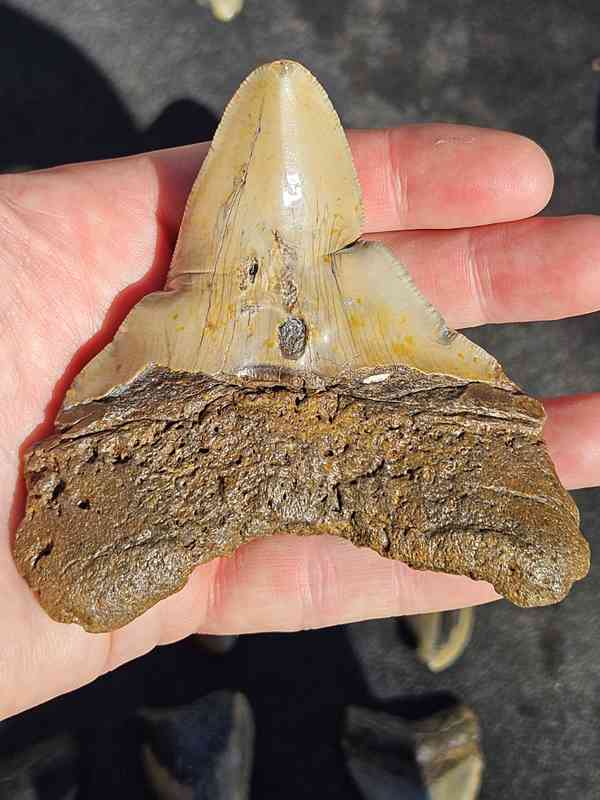Have a Question?
Pathological or Mutated Shark Teeth
Pathologic shark teeth are developmental abnormalities that can be caused by a variety of factors, including genetic mutations, injuries, nutritional deficiencies, and disease. They are relatively common in the fossil record and can be found in sharks of all ages and species.
Some of the most common types of pathologic shark teeth include:
- Compressed or dwarfed crowns: These teeth are smaller and narrower than normal teeth and may be crowded together in the jaw.
- Split crowns: These teeth have a crown that is divided into two or more sections.
- Twisted crowns: These teeth have a crown that is twisted or deformed.
- Fused teeth: These teeth are two or more teeth that have fused together.
- Missing cusps: These teeth have one or more cusps that are missing or underdeveloped.
Pathologic shark teeth can provide scientists with valuable insights into the health and well-being of ancient sharks. For example, a tooth with a compressed crown may indicate that the shark was malnourished, while a tooth with a fused crown may indicate that the shark had survived an injury.
In addition to their scientific value, pathologic shark teeth are also popular among collectors. Their unusual and bizarre appearance makes them highly sought-after specimens.
Here are some examples of pathologic shark teeth:
- Hubbell teeth: These are heart-shaped teeth from juvenile Carcharocles megalodon sharks. They are thought to have been caused by nutritional deficiency.
- Fish hook teeth: These teeth have a curved root that resembles a fish hook. They are thought to have been caused by an injury to the developing tooth.
- Split tip teeth: These teeth have a crown that is divided into two at the tip. They are thought to have been caused by a genetic mutation.
- Trident teeth: These teeth have three cusps instead of the usual one or two. They are thought to have been caused by a genetic mutation.
Pathologic shark teeth are a fascinating reminder of the diversity and resilience of nature. Even with their abnormalities, these sharks were able to survive and thrive in their environment.



